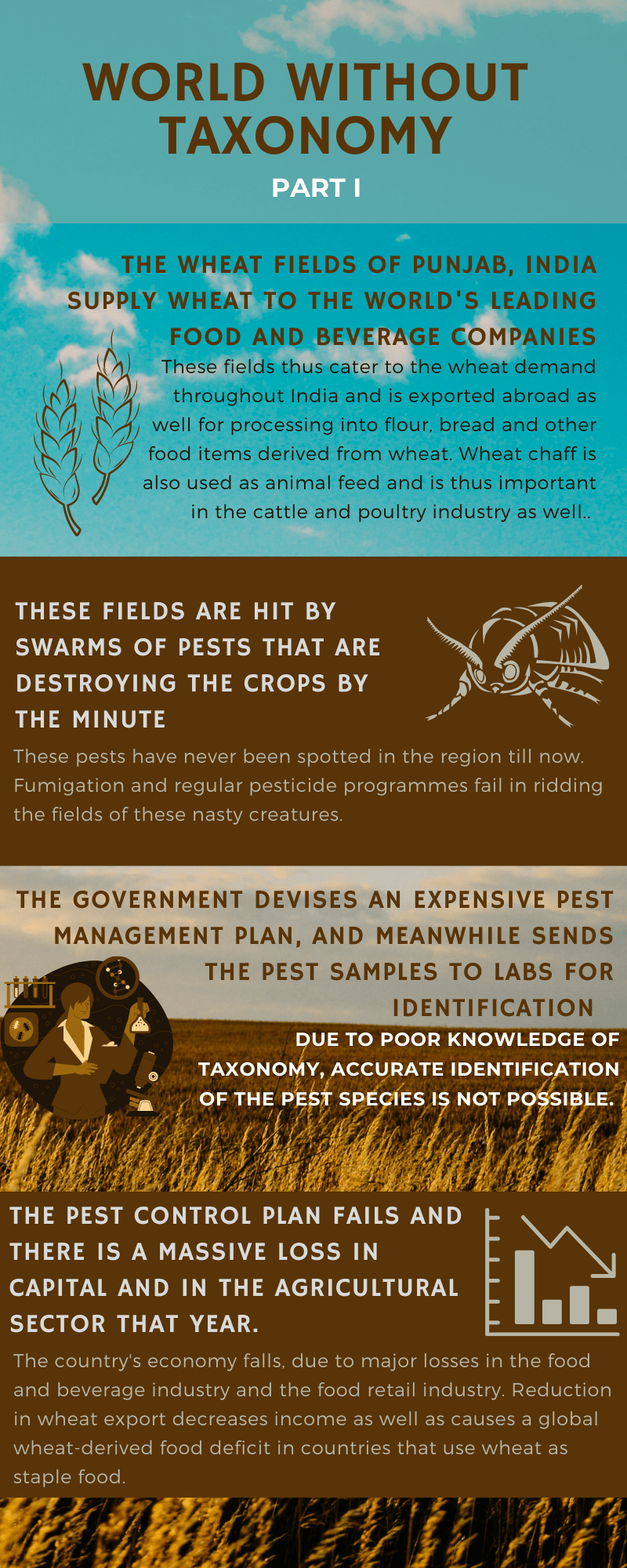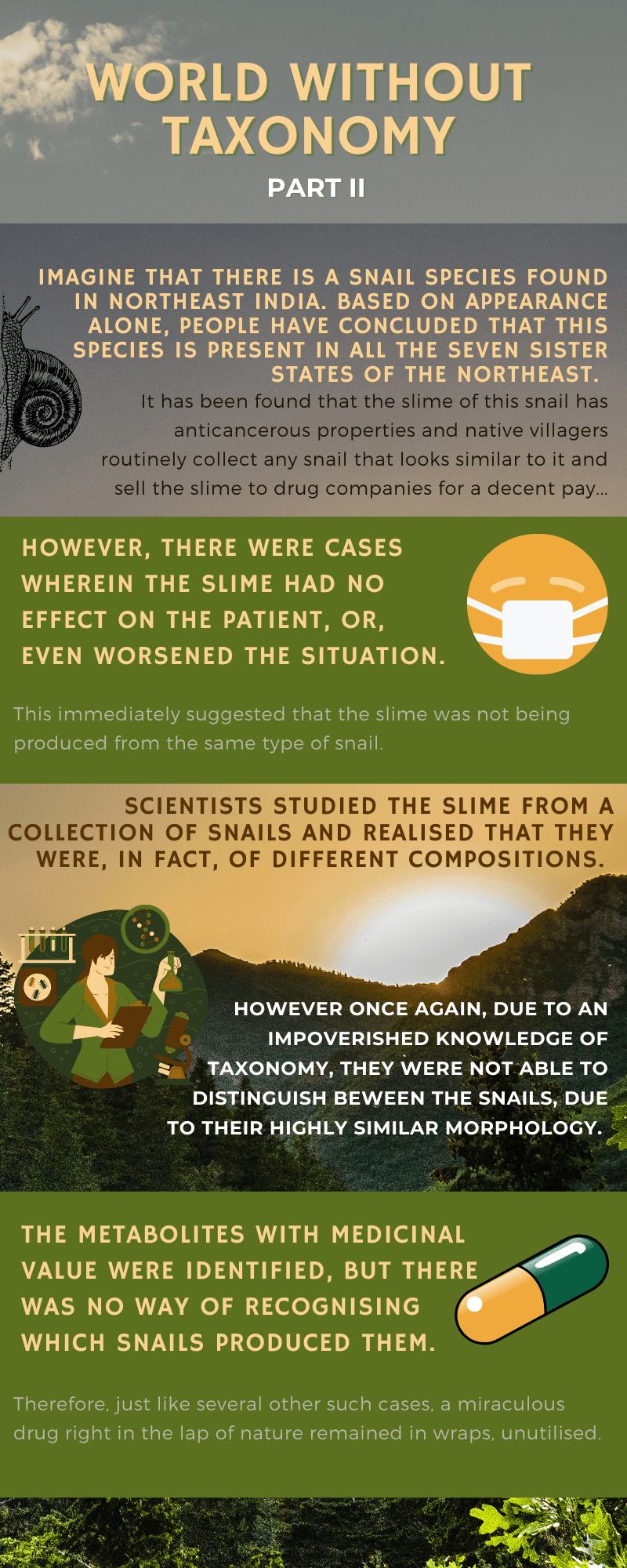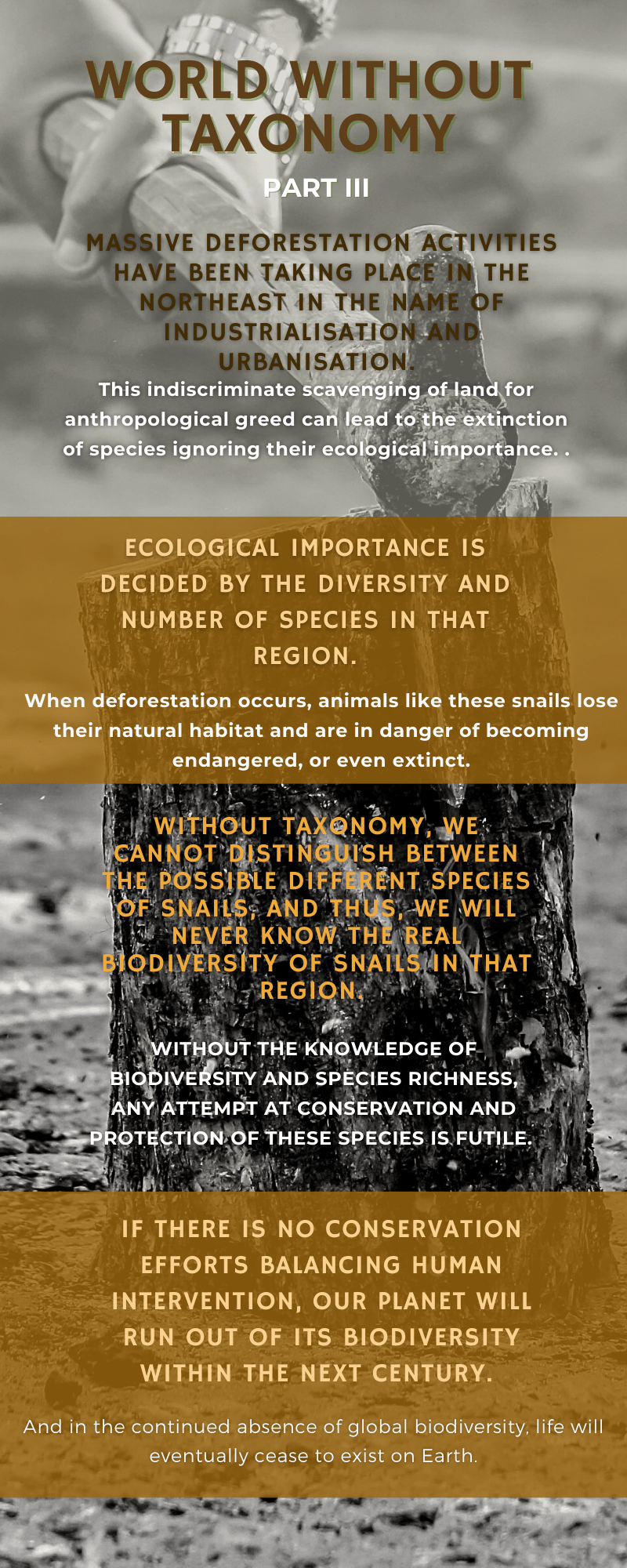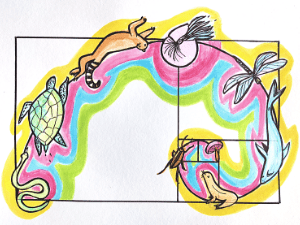So, what would we have without Taxonomy?
We’d have… Chaos.
~ Dr Paul Wilkin
Plant Taxonomist
Royal Botanic Gardens, Kew
What chaos? Well here’s a glimpse.
Let’s start with a common problem faced in the agriculture industry year after year: Pests. How would the absence of taxonomy make any difference here? Take a look:

A global deficit in staple food due to a population of tiny pests that, unfortunately, no one was able to identify thanks to neglecting the importance of taxonomy. Could that form the stage for another hypothetical “Great Depression” like the one that happened following the drought in the 1930s? Highly likely, if that “Pest That Cannot Be Named” affected other fields throughout the world.
If such pests cannot be identified, then there would be almost no knowledge about the origin of such species, especially in the case of non-native ones which would further delay the process of finding the right solution. If such invasive species (be it plants or animals) are neglected, they would be able to single-handedly compete with and destroy native species, causing huge losses to the economy, and more importantly to species diversity.
That brings us to the next problem: Species Misidentification and Description, which unfortunately is a problem we face today even with the development of research in taxonomy.

This is just one hypothetical example of the huge loss incurred by the health industry without the knowledge of taxonomy. Logically, it is highly unlikely that the same species of snail is found in an area spanning all the seven Northeast states. It would more likely be a cluster or complex of species that consist of other species-level lineages within it, which cannot be distinguished by morphology alone. Such morphologically similar species are called “Cryptic species”, which has been beautifully explained in this month’s Science Jam with renowned herpetologist R Chaitanya. This was a hypothetical example, which means that we haven’t discovered a snail species in the Seven Sisters that can be used to treat cancer, but you never know.
There have however been studies on other organisms where taxonomists have discovered species complexes.
For example, the gekkonid lineage endemic to the Western Ghats was previously represented by a single species called D. annamallensis. A taxonomic study conducted by R Chaitanya et al (2019) revealed that this was in fact a cryptic species consisting of seven species-level lineages, out of which six have been identified as distinct species and accordingly named and described.
Yet another study was conducted by Mirza et al (2018) to disentangle the crypsis behind Hemidactylus triedrus, and in turn, found that this was a species complex that was represented by H. triedrus sensu stricto and two undescribed taxa.
Next, we come to the elephant in the room: Ecology and Conservation.
Studies say that just around 20% of the species on this Earth have been described to date. The remaining 80% still remains a grey area, unexplored. Even with this knowledge, the fact that there is continuous destruction of forests and pollution of water bodies by the day destroying the homes of millions of species that we don’t even know about is extremely shameful. The domino effect that this has on our lives is illustrated here:

After having painted a rather grim picture of what would happen to the world in the absence of taxonomy, it is implied that taxonomic research is imperative for our survival on this planet. Taxonomy- though made to look rather taxing in textbooks- is actually a terrific branch of science. In this series on Taxonomy, we have explored several aspects of the topic, ranging from what it means (in “Tax-Oh No-My: The Unwarranted Tax”), how it began (in “The Curious Case of Serial Baptism”) and how it’s done (in “A Tree Story: Tropics to Phylogenetics”). After all this, it felt necessary to tie the season up with why taxonomy is important, and what would happen had Linnaeus not devised a way to baptize life all those years ago.
It is humbling that Agnarrson et al. (2007) pointed out nearly 14 years ago that “Without taxonomy, phylogeny is impoverished, ecology is deprived of one of its fundamental units of currency, and conservation biology loses focus and aim” but it is quite unsettling to realise that we haven’t made a lot of progress in understanding the need for this field since then.
In the first episode of this season, we picturised a hypothetical situation wherein aliens would visit our planet and would be astounded by the biodiversity around them. Similarly, if humans were to supposedly discover life on Mars, everybody on Earth would suddenly have a vested interest in how it looks, where it came from, how many varieties of it are there, so on and so forth. These questions, though naive, happen to form the foundation of taxonomy, phylogenetics and evolutionary biology.


The irony lies in the fact that one would be endlessly excited to hear about life on another planet, whereas, learning about the discovery of new species and new life on Earth can ‘bore one to tears’. It is paradoxical that “taxing”, “boring”, “monotonous”, “dry” are some of the terms used to define a science which we know so little about! 80% of the species on Earth is still like a gift waiting to be opened, and it should be no less tempting or exciting to learn about than life in outer space.
~
It is this “Science Paradox” that we have tried to dissolve through this series on Taxonomy. We now come to the end of this season and we hope this journey has changed your perspective on taxonomy and opened your eyes to how important this science has been, how insanely interesting it is, and how instrumental it will be for our future.
After all, a world without taxonomy is not a world at all!
. . .
References:
CHAITANYA, R., GIRI, V., DEEPAK, V., DATTA-ROY, A., MURTHY, B., & KARANTH, P. (2019). Diversification in the mountains: a generic reappraisal of the Western Ghats endemic gecko genus Dravidogecko Smith, 1933 (Squamata: Gekkonidae) with descriptions of six new species. Zootaxa, 4688(1), 1–56.doi:http://dx.doi.org/10.11646/zootaxa.4688.1.1
DOI: http://dx.doi.org/10.7717/peerj.5341
Lisa W. Drew. (2011) Are We Losing the Science of Taxonomy? As need grows, numbers and training are failing to keep up. BioScience, 61 (12) 942–946. DOI: https://doi.org/10.1525/bio.2011.61.12.4
Ingi Agnarsson, Matjaž Kuntner. (2007) Taxonomy in a Changing World: Seeking Solutions for a Science in Crisis. Systematic Biology. 56(3), 531–539. DOI: https://doi.org/10.1080/10635150701424546
Species discoveries and countless possibilities by Anuj Shinde published in Club SciWri licensed under Creative Commons Attribution-NonCommercial 4.0 International License.
. . .
Writing and Infographics by:

Anushree Krishnamurthy
Co-founder and Director of Website and Logistics
Illustration by:

Urja Kuber
Co-founder and Director of Website and Logistics

